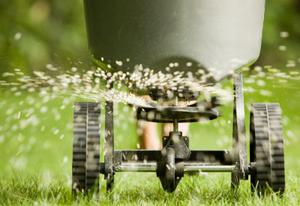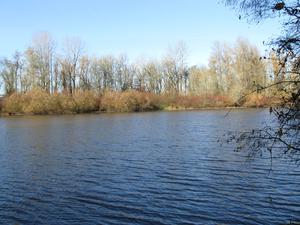Choosing the Right Fertilizers and Pesticides
Whether you prefer lush, verdant grass, drought resistant plants that make a statement, or lovely brick-work and some outdoor furniture - everyone likes a good-looking yard. We often achieve these welcoming spaces with the help of some pesticides and/or fertilizers. There may be particular pests you'd like to keep out of your space, maybe the winter rains allowed moss to invade your grass, or perhaps you have a major dandelion epidemic on your hands. For all of these problems, a seemingly simple solution can be found at any local hardware store - the fertilizer and pesticide aisles.
Slug slayer, gorgeous grow, weed and feed - we've all seen these products and thought "That's exactly what my yard needs!" However, while you’re standing there trying to decide which is the most effective chemical for your particular problem, an important factor to consider is the potential threat these options pose to the quality of our groundwater, rivers and streams. The products that help keep your yard in Keizer pristine can also end up causing serious harm to the valuable ecosystems of the Willamette River, Labish Creek and Claggett Creek.
Fertilizers 
The major components of fertilizers are nitrogen (N), phosphorous (P), and potassium (K). These elements are important to help your grass grow, but if there is more of these ingredients on your lawn than the grass can absorb through its roots, the excess fertilizer will seep into the groundwater or be washed into the rivers. That is why it is very important to figure out how much of each element your yard needs to stay healthy, then buy the appropriate fertilizer and follow the application directions to the letter.
We recommend buying fertilizer that is organic because it will release the nutrients slower than synthetic fertilizers. This means your lawn will be fed all season long with one application. Synthetic fertilizers on the other hand can provide too much nutrients to a yard too quickly which will “burn” the grass, causing it to die.
Want a more in-depth dive into the components of fertilizers, how to read a fertilizer label, and organic vs synthetic fertilizers? Check out OSU Extension’s Fertilizing Lawns article: https://catalog.extension.oregonstate.edu/ec1278/html
Pesticides
Most pesticides sold in stores contain toxins that are targeted toward a particular pest or group of pests. Since pesticides are poisonous, it is important you consider who all may come into contact with the area you plan to use pesticides on. Will you spray your yard for weeds then have your dog out? Do the neighborhood kids like to play kickball and sometimes end up chasing a run-away ball straight into your bushes? Keep these things in mind as you research what active ingredients you want to use to target your pests.
Once you’ve armed yourself with some knowledge, it’s time to go shopping. Show up to the store knowing precisely which active ingredient (toxin) you want to use on your lawn, and be sure to read the application instructions on the product labels before you choose one to purchase.
For more information about selecting pesticides, check out the National Pesticide Information Center: http://npic.orst.edu/pest/select.html
Healthy Rivers
When you take the time to do a little more research on lawn care products, you aren’t sacrificing a compliment-worthy yard, but you are reducing the excess chemicals that go into our waterways. Thanks to your efforts, the water quality in rivers improves. And clean rivers are able to provide habitat for fish and wildlife, a healthy source of water for human consumption, and a safe place for us all to spend a hot summer’s day.

